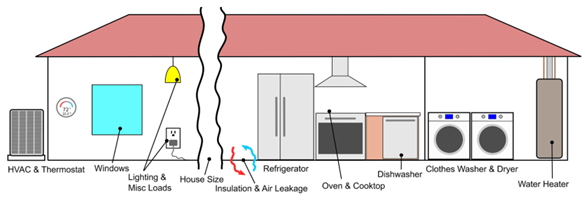University, NIST Researchers Create Residential Building Models to Evaluate Fairness of Electricity Tariffs

The increased adoption of energy technologies like smart meters, solar panels, and battery storage has led to a rise in electricity pricing plans with costs that vary based on the time of day or energy usage. The impact of these pricing plans on both the customer (in terms of managing costs) and the electric grid (in terms of reducing peak energy usage) can be evaluated using simulation software. However, most of these simulations do not consider differences between residential buildings or their residents that affect energy usage. As an example, a neighborhood of older homes with poor insulation will require more heating. Or, neighborhoods with different median income levels can have installed home appliances with different energy efficiencies. This makes it difficult to evaluate how electricity pricing plans will affect different types of residential customers.
Researchers from Santa Clara University, in collaboration with NIST, created simulations that contain multiple residential building models representative of different residential customers. These models use income level and climate zone data to help determine the size, insulation, number of windows, number of appliances, energy usage, and other home characteristics. An approach called co-simulation was used to combine the building models with an electric distribution grid simulation. The research team implemented different electricity tariffs in the simulation to explore the impact of those tariffs on different types of residential customers. The results show that electricity tariffs have different impacts on residential customers dependent on their income levels. When comparing electricity tariffs, the fairness to customers across different income levels is a factor that should be considered.
This research was published as a journal article in Applied Energy. The lead author, Hannah Covington from Santa Clara University, had previously interned at NIST as part of the NIST Summer Undergraduate Research Fellowship (SURF) Program.

